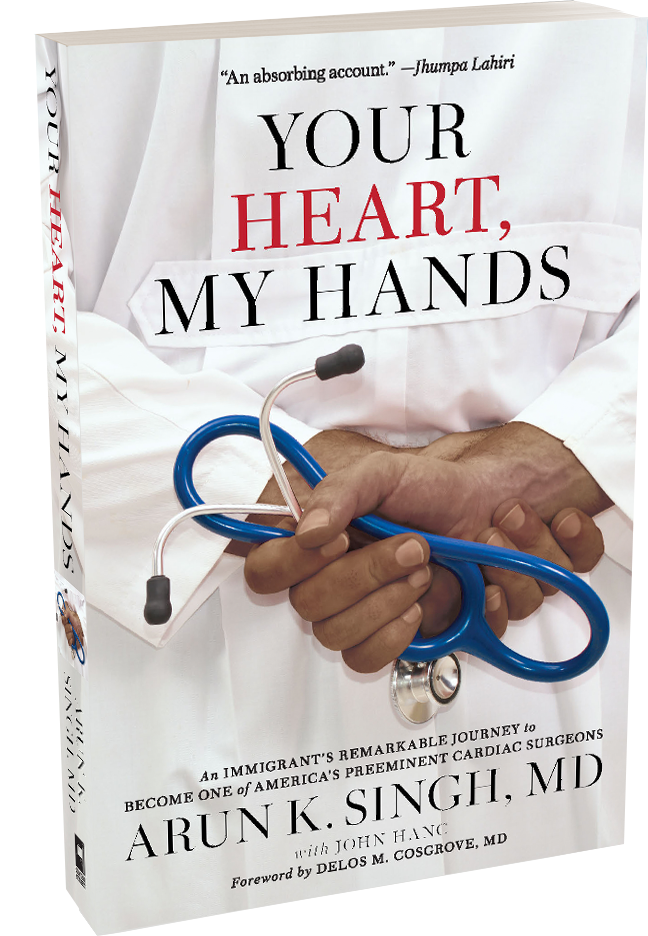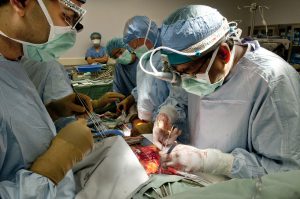
 In April 2019, Arun K. Singh, M.D., with John Hanc, released the awe-inspiring life story of one of the most preeminent surgeons in America, Your Heart, My Hands.
In April 2019, Arun K. Singh, M.D., with John Hanc, released the awe-inspiring life story of one of the most preeminent surgeons in America, Your Heart, My Hands.
Leaving behind a life marked by crippling setbacks and his father’s doubt, a twenty-two year old doctor from India arrived in America in 1967 with only five dollars and the desire to claim his American dream. The journey still awaiting Dr. Arun K. Singh would be unparalleled. Faced with an entirely new culture, racism, and the lasting effects of disabling childhood injuries, through hard work and perseverance he overcame all odds and achieved his goal.
Now having performed over 15,000 open heart surgeries—more than nearly every surgeon in history—Dr. Singh reflects upon his most memorable patients and his incredible life story. Shared for the first time, these intimate and uplifting accounts, along with photos, will have you cheering for the underdog and appreciating the enduring determination of the human spirit.
Excerpt from Your Heart, My Hands
Introduction
“The surgeon will go anywhere,” I declare.
The patient will not survive.
I realize this, and yet I cannot stop. I continue to cut and slice my way through ribbons of tissue and plateaus of fat. The scalpel and retractor are like extensions of my hands, as I probe and advance to the aortic valve—the gatekeeper of the heart, which allows blood to flow efficiently, unless it becomes calcified and narrowed like a clogged-up oil filter.

That’s where I come in. I am removing that valve and replacing it with an artificial one. Made of titanium and designed to last a lifetime, this simple object will keep the blood flowing, but inserting it is a meticulous and time-consuming, if routine, operation.
Carefully, I lower the valve into the aorta: the slow, graceful descent and its capsular shape remind me of the lunar module. It’s as if the Eagle is landing, except this time on a flesh-and-blood surface. I carefully begin the threading of the stitches, typically about 15 to 22, to secure the valve in position.
In a normal procedure of this type, there would be a moment of high-tech genesis, when the patient’s heart, having been stopped for the operation in order to give the surgeon a clear, blood-free view, is now restarted like a computer. The flat-lines on the echocardiogram begin to spasm, slowly but surely signaling a return to life.
And then a miraculous moment: On the echocardiogram monitor, part of the assemblage of monitors and imaging devices set in the modern operating room, there is a flicker of movement as the mechanical valve’s two crescent-shaped flaps, each about the size of quarter, begin to function. Doing its new job, which is essentially to keep a human being alive.
As a heart surgeon, I have followed pathways beyond the arterial. I have gone to some amazing places, tested emotional and physical limits (both mine and my patients) and experienced harrowing and awe-inspiring trauma and triumph. I invite you now to come with me as I revisit them to tell you the story of how the boy with the paralyzed hand and undiagnosed dyslexia went on to perform over 15,000 cardiac surgeries, and introduce you to the people whose hearts were entrusted to my hands. Learn how my patients impacted my life and how I impacted theirs.